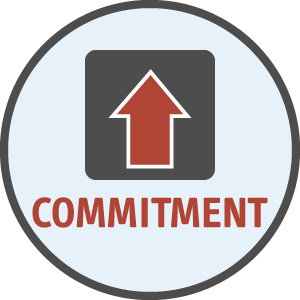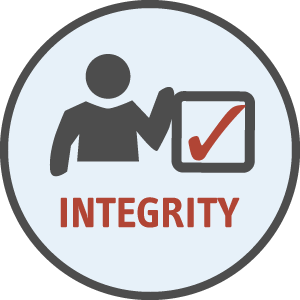PSO 2.0 – Transforming Professional Services into Professional Sales!?

Jump to a Section:
Commitment | Trust | Reliable | Integrity
Calling all CEOs, COOs and Board Members: if you aren’t looking at your Professional Services Organization (PSO) as a Professional SALES Organization, you are unequivocally hurting the value of your business.
If your PSO Project Managers, Consultants and Engineers are NOT searching for opportunities when they are actively involved within an account, your organization is NEITHER optimizing revenue NOR optimizing the Annual Contract Value (ACV) of your customer base.
Many of the clients that we have worked with over the years view PSO employees as either Technical Experts who can facilitate the pre-sales process by offering up hidden features and functions, or as Implementers who, once a deal is signed, need only focus on completing the project on time and on budget.
What fascinates me about this model is that it is built upon the premise that a technical expert can ONLY support the sales function up until the point that the deal is signed. After the deal is signed, the current model “pushes” the technical expert into the singular role of implementer. Let’s call this PSO 1.0 thinking.
In the world of technical sales there are multiple reasons why this push happens:
- The big picture focus is on software subscriptions
- The big picture focus is on installing hardware
- There is a backlog of business that requires PSO resources
- The need to complete the project so that it can be invoiced
- Company thinking that the account belongs to sales
AND - A mindset that PSO resources aren’t sales people
I understand all of these reasons, but as far as I am concerned, NONE of these reasons prohibits a “YES AND” approach to Professional Services: YES – any PSO resource assigned to a project needs to focus on the current project AND also be aware of future sales opportunities.
In my opinion, company executives should expect those within the PSO to be Technical Experts, Implementers, and also Business Consultants (searching for business opportunities that will benefit the customer and drive additional revenue after the initial sale). Let’s call this PSO 2.0 thinking.
So why haven’t more companies simply “flipped the switch” and moved to the PSO 2.0 model? In my experience, there are three main reasons:
- “I didn’t realize that PSO 2.0 was an option.”
- “Why would we change? Things are going well right now.”
- “We tried this suggestion, and it didn’t work.”
My responses:
- It is an option.
- It’s great that things are working, but they could be better.
- What exactly did you try?
Like any organizational or operational transformation from a version 1.0 to a version 2.0 there needs to be an investment of time, money and resources. The PSO 2.0 transformation is no different. This is not about simply “flipping a switch.”
Over the balance of this article, I will highlight a four-step process that, if followed, will help your organization to successfully navigate the transition from PSO 1.0 to PSO 2.0.

STEP 1 – Commitment
The first step of this transformation must be alignment between Sales, PSO and Customer Success. Each organization needs to clearly understand how this approach will impact their people and processes. If there is not agreement and commitment towards the new roles and processes, there is no reason to try to implement PSO 2.0.
This alignment process will not be easy. There will be fighting over roles, turf, and ultimately, ownership. In my experience, rolling out a pilot program within a few accounts or regions can reduce tensions during this step. Test the transformation and let the results speak for themselves.

STEP 2 – Trust
The second step of PSO 2.0 is gaining the buy-in of your frontline PSO resources. These individuals need to trust and buy into the YES AND approach to PSO 2.0. There will be some who feel that this transformation will turn them into, UGH, Sales People, while others will state that they would embrace the transformation if they were given additional training and coaching. Both reactions are real and have to be addressed.
A simple process that we utilize to help PSO employees buy into the transformation concept is to ask them a few simple questions about their typical projects. We will ask them:
- “When a project is sold, does the sales team know everything about the client’s environment?” Their answer is always – “NO.”
- We then ask, “When you and your PSO colleagues are involved in a project implementation, do you often learn about barriers that could hinder the ultimate outcome of the project?” Most of the time, they answer – “Yes.”
- Finally, we’ll ask, “Do you bring up these “issues” to the client?” Remarkably, about 50% of the time, they say – “No.”
- Consider the impact of that response. Those who answer no give us various reasons for their response – “Not my job, Not in the SOW, We are behind on hours, I brought up something like that once and…”
At a deeper level, what I am highlighting here is the concept of the “push” to implementation (ingrained PSO 1.0 mindset). Every PSO employee needs to feel that they have the ability and permission to bring up any barrier, or opportunity, that could positively or negatively impact the outcome of a project. This freedom will help them to realize that they are not “Sales people,” but truly Consultants who are helping to do the right thing for their customer. PSO resources need to accept and commit to this cultural shift (PSO 2.0 mindset).

STEP 3 – Reliable
The third step of the PSO transformation is documenting all of the new processes and procedures that are required within PSO 2.0, and then providing training for those who need additional help demonstrating any of the new performance standards. Consistent and reliable PSO 2.0 performance will only happen when your entire PSO team embraces the PSO 2.0 mindset, and demonstrates the PSO 2.0 skillset.
In Step two, I mentioned that approximately 50% of PSO employees don’t bring up “issues” that they encounter during a project, which means that approximately 50% do. Why does this split occur? It could be that certain PSO resources have a PSO 1.0 mindset, skillset, or both. While other PSO resources already have a PSO 2.0 mindset, skillset, or both. Examples:
PSO 1.0 “Susan is one of our top PMs, she gets projects completed on time/on budget, but she is super technical and she really doesn’t like engaging with customers.”
PSO 2.0 – “That’s just Steven, he is great at building relationships with customers, and he is more than comfortable acting like a salesperson.”
In order to ensure the success of the PSO 2.0 transformation, your organization needs to formalize all of the steps that are required and then review the new processes with your entire PSO team (skillet). Now that the new behaviors are documented, you can then ensure normalization occurs by delivering specific PSO 2.0 training (mindset).
I will caution you to NOT fall into the trap of simply modifying the roles of employees within PSO. This transformation will impact various processes within the customer journey, including pre-sales, sales and customer success.

STEP 4 – Integrity
The fourth step of the transformation is monitoring the changes and ensuring that the integrity of the new plan is implemented. As mentioned within Step three, PSO 2.0 impacts multiple departments, but the largest quantity of behavioral changes needs to be made by Professional Services employees – PMs, Consultants and Engineers.
In the example sighted above, Steven might need to improve his ability to formulate project budgets, or utilize technology, but for the purposes of a PSO 2.0 transformation, he is well positioned. On the other hand, in order to be successful in PSO 2.0, Susan might need specific training on Presenting Business Outcomes or Linking Product Solutions to Customer Needs. Let’s be clear, these training needs don’t make Susan a bad employee, they simply mean that she will need additional training, coaching and support in order to be successful within a PSO 2.0 environment. Steven might need less assistance to succeed within the new environment.
Frontline leaders need to be present to assist all those who need help. They also need to demand that everyone embrace the new PSO 2.0 world. If they don’t, your 1.0 to 2.0 transformation will fail, or it will certainly not be as effective as it can be.
So now you know that a transformation from PSO 1.0 to PSO 2.0 is possible – and if you do a little bit of research into best-in-class PSOs, I would guess that you’d realize that your organization has room for improvement. While doing your research you might stumble across an alarming statistic that states 70% of business transformations fail. In our experience, this high rate of failure occurs because most organizations do not fully consider and analyze all of the impacted stakeholders and plan accordingly. Don’t simply “TRY HARDER THIS TIME.” Ensure that this transformation is lead by a team that thoroughly understands Sales, Services, Customer Success and every element of Change Management. If you are missing any one of these elements, you will most likely end up in the 70%.
LIFT does have expertise in all of these areas, and we are ready to support your transformation efforts and improve the value of your business. Let’s get started!
robertlogue@liftsalesforce.com